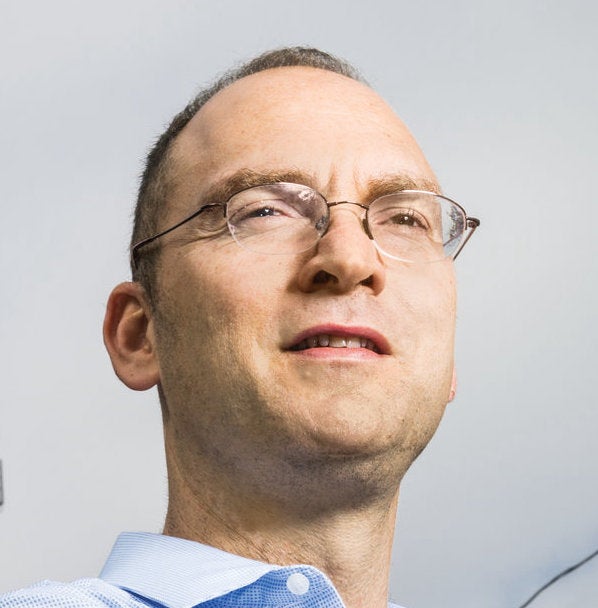Ronny Hadani
- Associate Professor
- Mathematics

Contact Information
Biography
Ronny Hadani is an associate professor in the Department of Mathematics. He earned his M.Sc. in computer science and applied mathematics from the Weizmann Institute of Science in 1998, under the supervision of David Harel, and his Ph.D. in pure mathematics from Tel Aviv University in 2006, under the guidance of Joseph Bernstein.
Hadani was previously an L.E. Dickson Instructor at the University of Chicago. In 2009, he joined the UT Austin as an assistant professor and was later promoted to associate professor.
His research interests include representation theory, the theory of algebraic D-modules, and their applications to harmonic analysis, signal processing, mathematical physics, and three-dimensional cryo-electron microscopy.
In 2010, Hadani co-founded Cohere Technologies, a Silicon Valley wireless startup, with Shlomo Rakib. The company focuses on improving wireless communications using Orthogonal Time Frequency Space (OTFS) modulation and the Delay-Doppler model to enhance spectrum performance for 4G and 5G networks.
Hadani has been granted over 70 patents related to OTFS technology, which has been tested by companies such as C Spire, 5TONIC, Telefónica, and Deutsche Telekom.
Research
- Representation theory
- Theory of algebraic D-modules.
- Applications to harmonic analysis, signal processing, three dimensional cryo-electron microscopy and mathematical physics.
Large portion of my work in the last few years is concerned with the study of the algebraic structures which underlay harmonic analysis over Önite Öelds and over the reals and complex numbers. In this regard, my Öeld of research is a part of "algebraic analysis" and may be referred to as "algebraic harmonic analysis". These algebraic structures appear in two forms which strongly interact with one another.
The Örst is representation theory, speciÖcally, the Weil representation of the symplectic group. The second is algebraic geometry, speciÖcally, the theory of `-adic sheaves in the Önite Öeld setting and the theory of algebraic D-modules in the real and complex setting. My research involves a purely mathematical aspect which is the systematic development of this algebraic framework and an applied mathematical aspect which is application of the mathematical theory to basic problems that originate from other parts of science such as physics and engineering.
Recently, I am devoting much of my research to the development of a novel non-linear optimization paradigm that is based on representation theoretic ideas; this work is conducted as part of a joint e§ort to tackle a fundamental problem in structural biology - determination of three dimensional macromolecular structures from noisy projection images obtained by an electron microscope (three dimensional cryo-EM for short).
Research Areas
- Mathematics
Fields of Interest
- Algebra
- Applied and Computational Mathematics
- Probability and Statistics
Education
- Ph.D., Tel-Aviv University (2006)
Publications
PDF versions of most of my publications can be found on my website: http://www.ma.utexas.edu/users/hadani/
Papers in Journals
Hadani R. and Singer A. - Representation theoretic patterns in three dimensional cryo-electron microscopy I - The intrinsic reconstitution algorithm. Annals of Mathematics (2011).Gurevich S. and Hadani R. - Proof of the Kurlberg-Rudnick rate conjecture. Annals of Mathematics (2011).
Hadani R. and Singer A. - Representation theoretic patterns in three dimensional cryo-electron microscopy II - the class averaging problem. Foundations of Computational Mathematics (FoCM) (2011).
Singer A., Zhao Z., Shkolnisky Y. and Hadani R. - Viewing Angle Classification Of Cryo-Electron Microscopy Images Using Eigenvectors. Siam Journal On Imaging Science (2011).
Gurevich S. and Hadani R., The Categorical Weil Representation. Submitted (2011).
Gurevich S., Hadani R. and Singer A. - Representation theoretic patterns in three dimensional cryo-electron microscopy III - Presence of Point Symmetries. In preparation.
